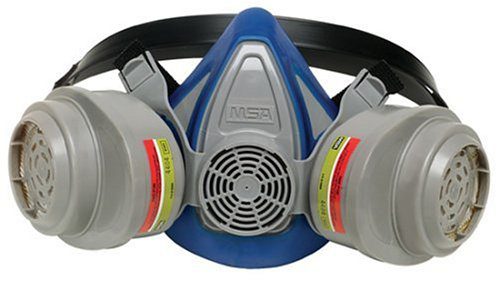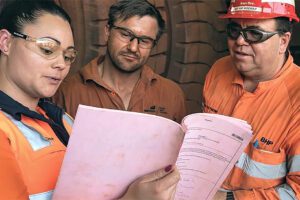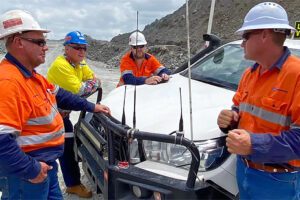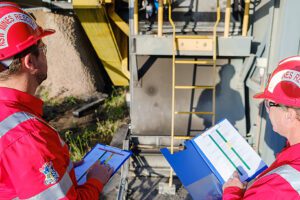The correct fitting of respiratory protective equipment (RPE) is critical to ensure a tight seal is made around the face and the respirator is able to prevent exposure to contaminants.
However individual facial structure, facial hair such as stubble, beards, moustaches and sideburns, long hair, jewellery and makeup can all prevent a tight seal from being formed, meaning that regular fit testing is essential. When prescription glasses are worn in conjunction with RPE, both should be tested to ensure no effectiveness is compromised.
Comfort is also important as it will encourage wear. A good respirator should provide a tight seal without being uncomfortable.
The Australian Standard AS/NZS 1715:2009Selection, use and maintenance of respiratory protective equipment cautions against over tightening the respirator to achieve a tight seal because “the wearer may be unable to tolerate using the RPE for any length of time.”
Fit and seal testing
The Standard describes two types of respirator fit tests- qualitative and quantitative – that can be used to determine an adequate match between the face piece of the RPE and face of the wearer.
It states that a qualitative or quantitative fit test should be performed before a respirator is used and then “at least annually or whenever there is a change in the wearer’s facial characteristics or other features which may affect the facial seal of the respirator”, such as weight changes, loss of teeth or when biological tests indicate exposure to a contaminant.
Furthermore, before each use, the respiratory protective equipment should be worn prior to the worker entering a contaminated area and a simple positive or negative pressure check performed by the user to check the fit.
Commercial qualitative testing kits are available and while qualitative tests are fairly easily performed they are subjective to the user and so not necessarily reliable.
Quantitative test methods remove this subjectivity by using equipment to measure the efficiency of a respirator in preventing materials in the atmosphere from entering a user’s breathing zone.
Qualitative and quantitative respirator testing is carried out with the help of, or by a specialist who will determine a suitable approach tailored to your requirements.
However neither should substitute for pre-use positive and negative fit testing which are essential and will function as a simple backup seal assessment.














Add Comment